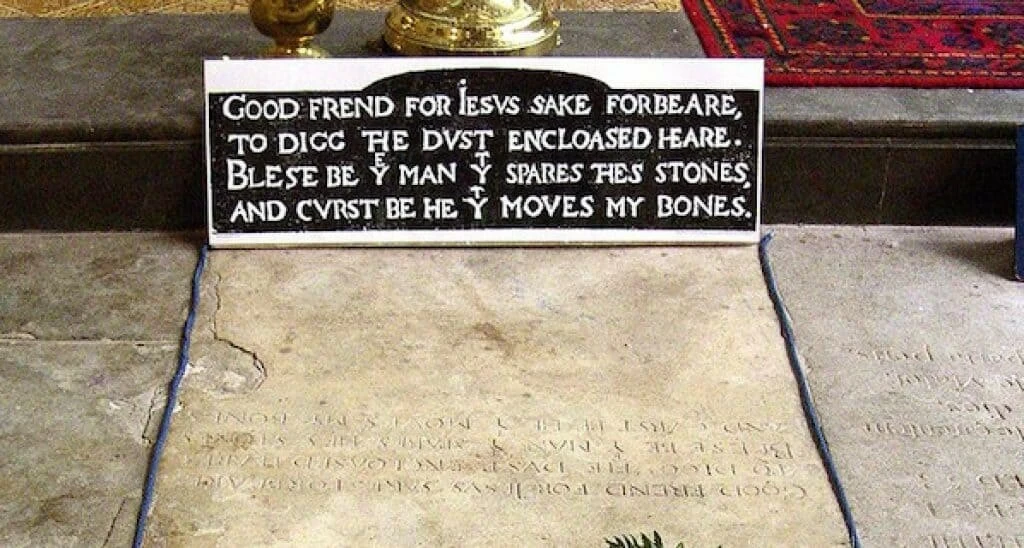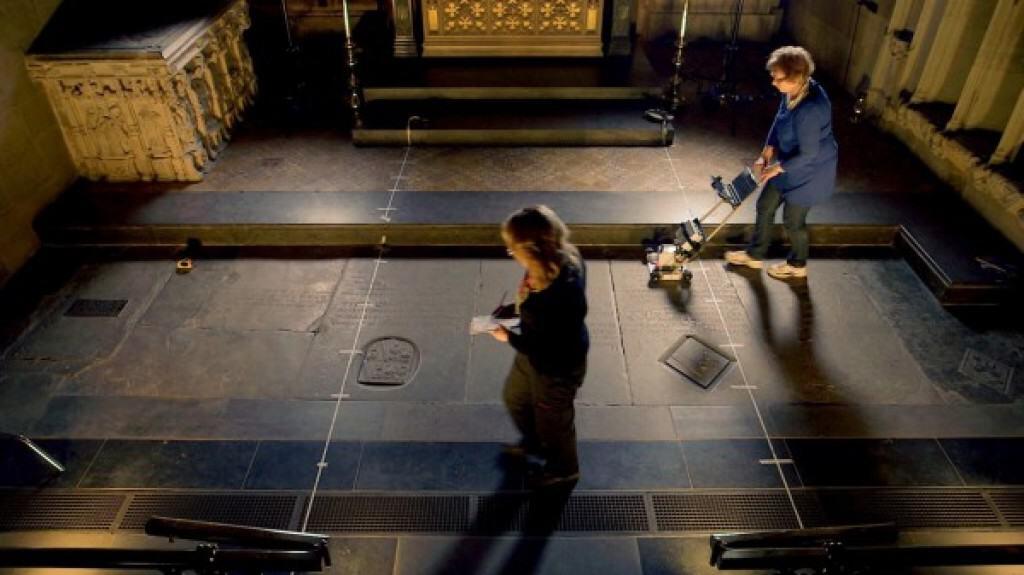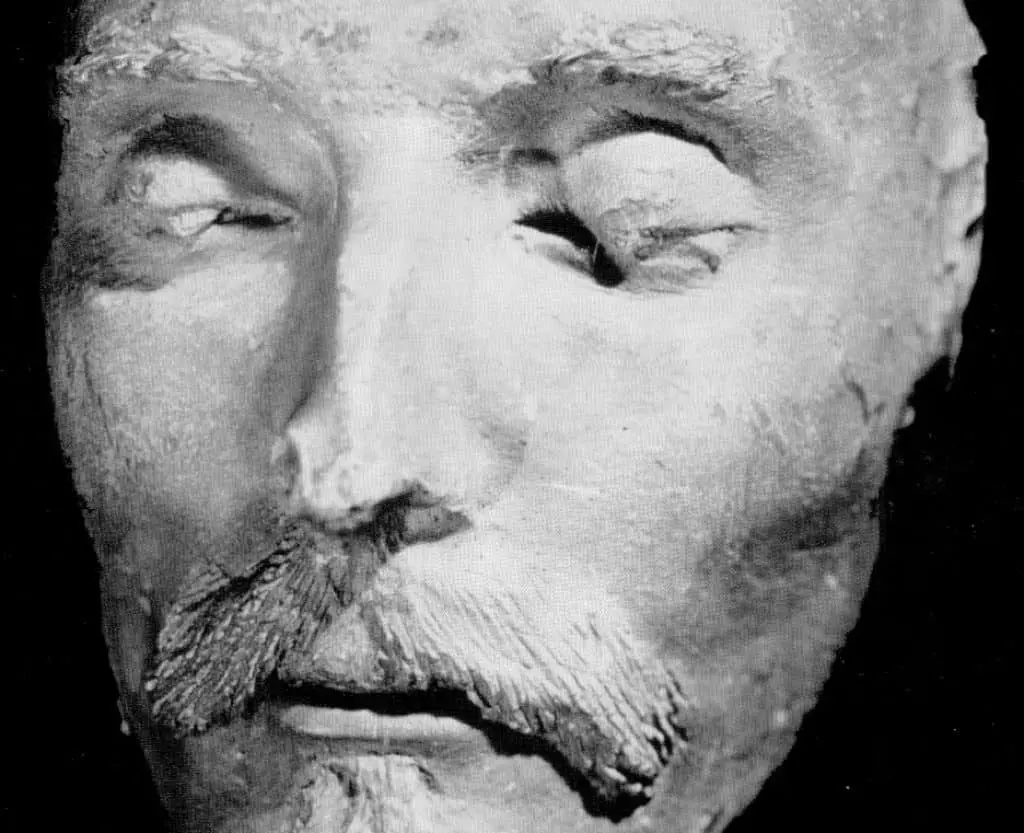A grave with possible disturbances. Repairs to the floor surrounding the grave. A mysterious skull found in a vault. Grave robbers. A mystery that spans hundreds of years. One might say that the mystery of Shakespeare’s head is reminiscent of a Shakespearean play. However, it is actually a long-standing mystery that could finally be answered with the use of modern science.

Shakespeare’s grave at the Holy Trinity. Image: David Jones [CC BY-SA 2.0 ]
…Blessed be the man that spares these stones, And cursed be he that moves my bones.
While this marker could deter some from touching the grave in fear of “toil and trouble” (Macbeth, Act 4, Scene 1, line 10), many experts believe that Shakespeare’s head was removed from his resting place in the church. The expert’s opinion matches the story and the details that the someone stole the skull in the late 1700s.
Modern Technology

Researchers utilize Ground Penetrating Radar on Shakespeare’s tomb. Image: (Channel 4/PA)
With the use of modern technology, Shakespeare’s final resting spot is visible without making a single disturbance to the grave and bones. Grand penetrating radar (GPR) “uses a high-frequency radio signal that is transmitted into the ground and reflected signals are returned.” With the radio signals, one can see into the ground without disturbing the grave.
Related: The Shakespeare Authorship Question
The Shakespeare survey, headed by the archeologist project manager at Stattfordshire University Kevin Colls, disclosed that the evidence of a major repair at the head-end of the grave “may have been needed to correct the sinking floor, which in turn was triggered by a historic disturbance-possibly grave robbers.” Shakespeare’s grave, the grave of his wife lie about a meter under the ground, which would make it easy for grave robbers to access the grave. Making it easier still, there is no visual evidence of a metal coffin; experts believe that the lack of metal suggests the body lay shrouded and buried versus a coffin burial.
Why Remove Shakespeare’s head?
There are a two theories as to why Shakespeare’s head may have been removed.
- During that time, family members removed skulls and other body parts and placed them in another’s grave.
- The other and more interesting theory is that a grave robber stole the skull. The skull is the ultimate Shakespearean trophy, but the purpose may have been to sell it for medical purposes. One idea is that the skull would have been studied for personality or intelligence, called phrenology.
Mysterious Skull

The reputed death mask of William Shakespeare.
At a nearby parish of Boely in Worcestershire, a long-time theory that a skull found in a vault was that of Shakespeare. Tests revealed that this skull belonged to an unknown woman who passed away in her 70’s.
Is There a Skull in the Grave?
While the evidence doesn’t show a definitive skull in the scan, it doesn’t showing that one is missing either. What are the next steps? Many say that it is a mystery that should remain a mystery.
John Hogg, who runs the Stratford Town Walk, enjoyed the investigation but says:
[blockquote align=”none” author=”John Hogg”]We don’t know for certain that the skull is missing…It is my personal feeling that he [Shakespeare] should be left alone now. He’s laid there for 400 years. It’s time to allow the mystery to remain just that.[/blockquote]
References
Lawless, J. (2016, March 24). Shakespeare’s Head is Missing. Retrieved from US News.
Radford, B. (2016, March 29). Why Would Someone Steal Shakespeare’s Head? Retrieved from Discovery News.
Samuelson, K. (2016, March 23). Shakespeare’s Head is missing! Retrieved from Daily Mail.
Woods, R. (2016, March 27). Shakespeare’s Skull: New Chapter in the hunt for missing head. Retrieved from BBC.